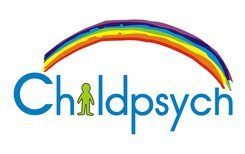Attention Deficit Hyperactivity Disorder (ADHD) is often associated with distractibility and difficulties in focusing. However, there is another side to ADHD that parents and caregivers should be aware of – hyperfocus. In this blog, we will delve into the concept of hyperfocus in ADHD, its effects on children, and strategies to manage it.
What is Hyperfocus?
Hyperfocus is an intense state of concentration and absorption in a particular activity or task. It is characterized by an individual’s ability to become deeply engrossed in an activity to the exclusion of everything else. While hyperfocus might sound like a beneficial trait, it can pose unique challenges for children with ADHD.
Understanding Hyperfocus in ADHD
- The Double-Edged Sword: Hyperfocus can be a double-edged sword. On one hand, it can enable children with ADHD to excel in certain areas, such as art, music, or video games. On the other hand, it can lead to difficulties in shifting attention when necessary, causing problems in academic and social situations.
- Trigger Factors: Certain factors can trigger hyperfocus in children with ADHD. These may include high-interest activities, novelty, or the presence of immediate rewards. For instance, a child with ADHD may hyperfocus on a video game because it provides constant stimulation and rewards for their attention.
The Impact of Hyperfocus on Children
- Academic Challenges: In a classroom setting, hyperfocus can lead to problems in following instructions, transitioning between tasks, and completing assignments on time. Children may get stuck on one task, ignoring other important responsibilities.
- Social Implications: Hyperfocus can also affect a child’s social interactions. When deeply engrossed in an activity, they may become less responsive to social cues, which can lead to difficulties in forming and maintaining friendships.
Managing Hyperfocus in ADHD
- Establish Routines: Creating structured daily routines can help children with ADHD manage their hyperfocus. Set specific times for homework, play, and other activities, allowing them to switch their focus when necessary.
- Use Visual Cues: Visual cues, such as timers or schedules, can help children become aware of time passing and remind them to switch tasks. This can reduce the risk of hyperfocus on a single activity.
- Break Tasks into Smaller Steps: Break tasks or assignments into smaller, manageable steps. This approach can make it easier for children to shift their focus from one task to another without feeling overwhelmed.
- Encourage Physical Activity: Regular physical activity can help children with ADHD release excess energy and improve their ability to transition between activities.
As parents, understanding hyperfocus in ADHD is crucial for effectively supporting our children. It’s important to strike a balance between allowing them to pursue their passions and teaching them how to manage their hyperfocus for better overall functioning. To learn more about this topic, watch this informative YouTube video.
In conclusion, hyperfocus in ADHD is a complex trait that can bring both advantages and challenges to children. By recognizing its presence and implementing strategies to manage it, parents can help their children thrive academically and socially. If you found this information helpful, please share it with others who may benefit from it. Together, we can support children with ADHD in harnessing the power of their unique abilities.

